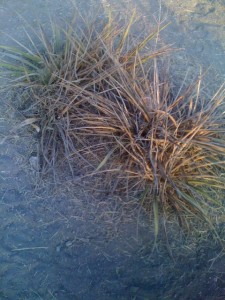 Pigeon fever is a bacterial infection that normally manifests as superficial abscesses. The chest of the horse is the most common location for a large abscess and the swelling resembles the chest of a pigeon. The condition normally shows up in the dry summer months when the bacteria is picked up from the dirt by flies and spread when the infected fly bites the horse. The question is with a holistic horse health plan in place can pigeon fever be prevented?
Pigeon fever is a bacterial infection that normally manifests as superficial abscesses. The chest of the horse is the most common location for a large abscess and the swelling resembles the chest of a pigeon. The condition normally shows up in the dry summer months when the bacteria is picked up from the dirt by flies and spread when the infected fly bites the horse. The question is with a holistic horse health plan in place can pigeon fever be prevented?
In the past 30 + years of my veterinary practice in central Texas I have seen very few cases of pigeon fever until the summer of 2011. In 2011 Texas was in the worst extended drought in the history of America. Over 3 months of 100+ temperature days and no rain made pastures look like parking lots. Hay was in very short supply and of poor quality. By mid summer cases of pigeon fever began to pop up all over the state. In hindsight, I believe many of these cases could have been prevented.
The thing is with this pigeon fever outbreak is the cases did not stop when the weather got cooler and the drought eased up. Instead, new cases appeared and these winter cases were much more severe than the summer ones. One local vet clinic reported new cases every day in Jan. People with these winter cases were spending huge sums in vet bills because the abscesses were forming deep in the tissues and not coming to the surface to rupture.
I don’t have proof but I strongly suspect Vit A deficiency to the behind the outbreaks of pigeon fever, especially these recent severe cases. I observed that my clients who were feeding a powdered form of blue green algae had fewer and milder cases of pigeon fever. This algae blend contains blue green algae which is a wonderful source of beta carotene. Beta carotene is converted in the body to Vit A. Vit A is essential for the health of the immune system and the integrity of the skin.
Horses are not able to produce Vit A in the body so it must convert its precursor, beta carotene, which is consumed by the horse. Fresh grass and green leafy hay are the usual sources of beta carotene for the horse. Grains contain little, if any, beta carotene. To have adequate levels of beta carotene, hay must be harvested correctly and not stored for an excessive amount of time. Hay that is rained on after cutting or allowed to become too dry will not have good beta carotene levels. Hay loses about 10% of its beta carotene content for every month it is stored.
Lon Lewis states in is book Equine Clinical Nutrition that if a mature horse consumes fresh green forage for a period of 4 to 6 weeks it will saturate it liver storage capacity for Vit A and this will meet its needs for 3 to 6 months. It usually takes a full year for Vit A reserves to become totally depleted. Well guess how long our drought has been, over 2 full years.
In summary
Why I think the Texas pigeon fever outbreak is related to Vit A deficiency:
Extended drought with little green forage available for over 2 years
Poor quality and/or old hay supplies
Vit A content of feeds or formulated supplements too low to meet needs of horse
Good sources of beta carotene that will convert to Vit A:
Fresh grass
Green, leafy, fresh hay, especially alfalfa
Yellow or orange vegetables such as carrots
Blue green algae
We are starting to see some rain in Texas but we are far from being out of the drought. If my theory is correct and we have some good spring grass we should start seeing fewer, milder cases of pigeon fever. If the drought persists then we will have to look to sources for beta carotene other than hay and grass. Vit A can be given in the form of injections or supplements but it can be toxic in excess. Beta carotene is the best and safest way to meet the horse’s Vit A needs. Madalyn
If you liked this post, please leave a comment or get more great holistic horse info at Holistic Horsekeeping, Horse Harmony Test, Horse Harmony, and on Twitter.
I had a pregnant mare with a very bad case of pigeon fever that started in early November 2011 and persisted until early January 2012. I started her on two weeks of transfer factor in late December 2012 in a desperate attempt to get the PF cleared before she foaled (foal was ‘due’ January 8, but she carried 370 days and foaled on 2/1). I cannot say the TF was the reason the PF cleared, but her appearance and demeanor changed dramatically within a few days of starting it–most notably, her long shaggy coat, which I took to be simply a winter coat, came off in handfuls, and she developed a ‘bloom.’